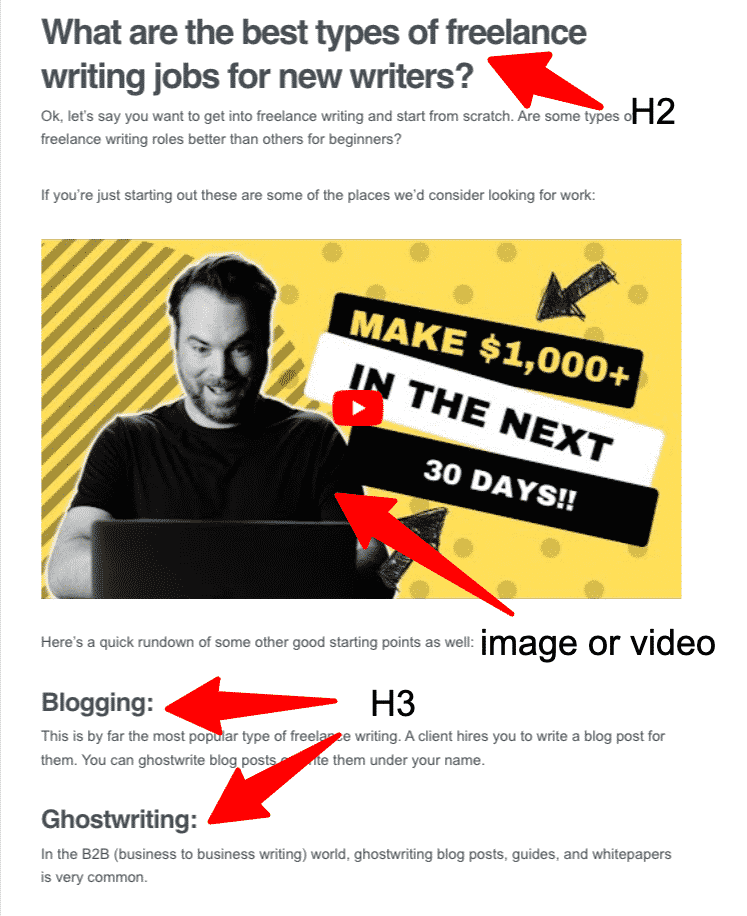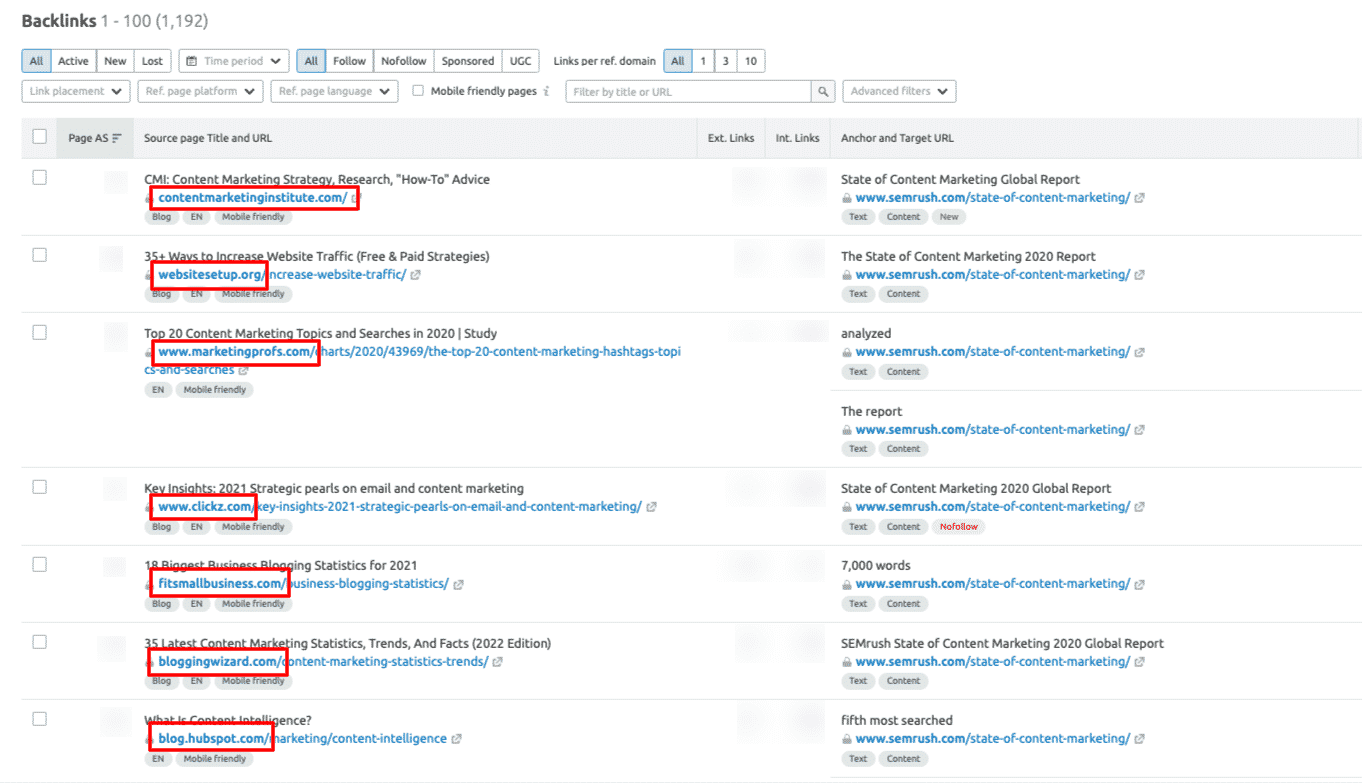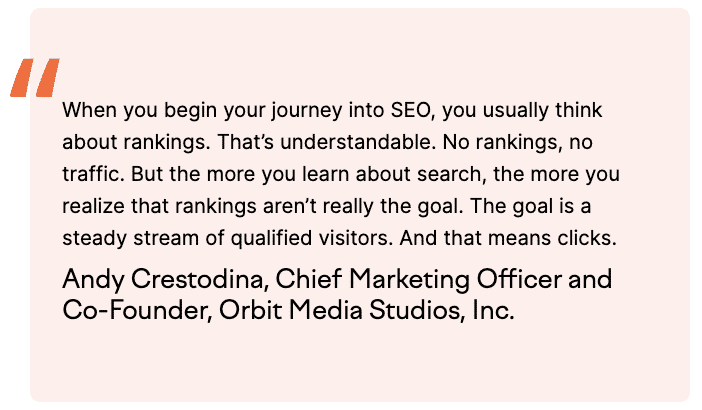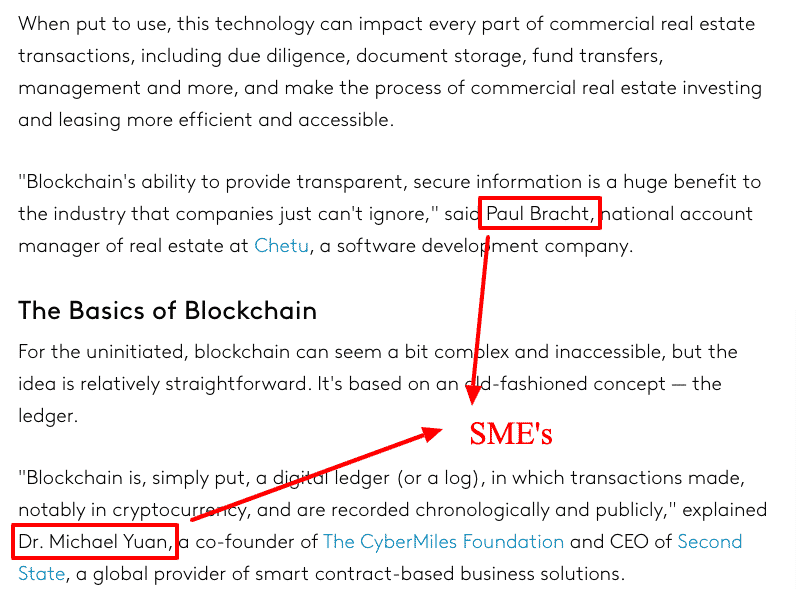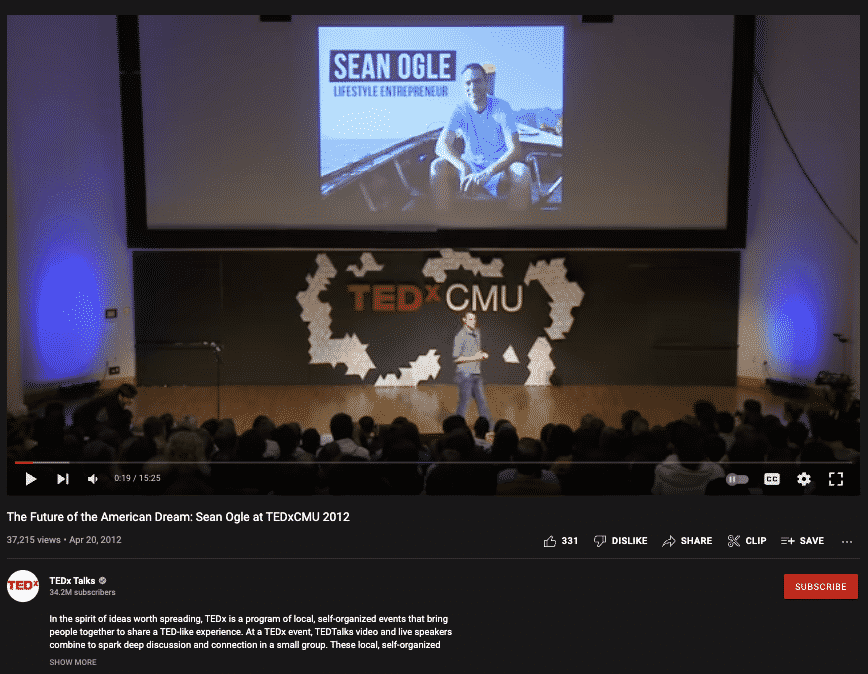Savvy freelancers watch for opportunities hidden in plain sight. If you can jump on something slightly ahead of the curve, it’s easy to stand out as ‘the’ person in your niche.
Of course, it’s easier said than done.
A hidden source of golden nuggets is an industry report. The problem?
A lot of people don’t read these in-depth. But that’s good for you. Because if you do pay attention, you’re going to find a few key trends you can flip into paying opportunities.
The Semrush Content Marketing 2022 Survey is one example. I dug into it and a related webinar and came away with a few opportunities for freelance writers.
If you’ve been looking for a few ways to position yourself as a stand-out freelance writer in the coming years, these are a few places to start.
1). Write in a Way that Keeps Eyes on the Page
Having lots of white space on a page is nothing new, we recommend it when we show freelancers how to write blog posts. But it’s becoming more critical for people to stick around.
Here’s the hard truth: people don’t read online — they skim.
Format your writing to keep eyeballs moving. That means writing with the reader in mind.
“Articles with more than seven images generate 116% more organic traffic than those with none.”
Your words aren’t the only thing that matters now. It’s about the user experience too.
Think about how you consume blog posts and other content. How quickly are you willing to leave if it doesn’t ‘look’ good to you. That’s a part of the user experience.
A good rule of thumb on white space is to have something white space-related (header/image, etc.) for every page scroll.
Here’s how to add white space to your content:
- Use H2 and H3 headers throughout your posts.
- Add a lot of relevant images and videos.
- Have bullet points.
- Bold or italicized words/sentences when needed.
How writers can capitalize:
User experience (UX) is paramount for brands today. Write so your post keeps eyes scrolling down the page. Doing so will help boost stats brands track like on-page time.
2). Become a Pro at Translating Data into Content
Brands are always looking for ways to stand out. That’s getting increasingly harder when so much content is the same stuff regurgitated repeatedly.
To combat that, brands are turning to research. They’re conducting studies, in-house research, and surveys.
When you become a primary source of information (like Semrush and their survey), other sites will write about your research and link to you.
Check out this example from this report.
Yep, I used Semrush, our keyword research tool of choice, to look at Semrush’s backlinks from releasing this report every year.
What do you see?
The most popular sites in marketing link to it. That gives this report more authority as a trusted source.
This trend is big for B2B brands who need writers to take some of that raw data and create content around it.
Last year, I worked on a project with an insurance client for a study they conducted. They sent me the data and a rough slide deck they’d created. I turned it into a long-form block post (about 2,000 words) which they designed into a whitepaper and used it to capture emails on their site.
How writers can capitalize:
If you’re someone who can dig into data and turn it into blog posts, you’ll be in demand.
Go through research studies and reports in your niche. Then write content analyzing the data. That’s a good way to get noticed.
Join over 40,000 people who have taken our 6 part freelance writing course. Sign up below and let’s do this together.
By entering your email address you agree to receive emails from Location Rebel. We'll respect your privacy and you can unsubscribe at any time.
3). Push SEO Writing Aside, Long-Form Content is King
Yes, SEO still matters.
But, for brands, there’s a shift toward engagement.
Ranking high on search is well and good, but what happens if no one is clicking through to read the content? Here’s what Andy Crestodina of Orbit Media had to say about that in this post about the Semrush content marketing survey highlighting key findings.
So what happens if a brand is ranking well for a term, but no one is clicking on it?
Then they’ve got a problem.
What brands are trying to do is stand out. It’s getting harder.
So they have to dig deeper to do it. That’s where you come in because long-form content is becoming increasingly important.
“Articles over 3,000 words get 138% more traffic than those with fewer than 500 words, and 78% of articles with fewer than 500 words have not been shared.”
Long-form content is one answer. But, it’s not about writing words for the sake of it.
Readers are smarter than that.
The long-form content that resonates digs deep into a topic — ultimate guide or how-to posts are examples.
Niching down into a long-form content writer for x industry can be a smart move as more brands will start to want more of that type of writing. Get ahead of the game and focus on it now, the deeper you can get into your niche, the better.
How writers can capitalize:
Become a long-form content pro. It takes time and energy to create killer pieces that explore a topic. But the writers who can do that in a niche will always be in demand.
4). Flex Your Interviewing Muscles for Fun and Profit
The first time I was asked to chat with a subject matter expert for an article I was terrified.
I wasn’t a journalist. I had zero interviewing skills.
What was I even supposed to talk about?
Once I finished the interview (and double-checked the 3 recordings saved) I realized the SME gave me a ton of great insight I could add to my piece and make it better.
Now, I chat with SMEs all day long. Even when it’s not required, adding some quotes from an expert can elevate your work. It shows you spoke with knowledgeable experts in the field who could add more context to the piece.
And on the plus side, SMEs love to share their interviews, so it gives a nice little boost to distribution too.
Last year, I wrote an article about commercial real estate and blockchain.
Since I’m an expert in neither, I spoke with people who are to add a few quotes and help explain a topic people find confusing:
Being able to interview SMEs and write about it is a skill.
As more brands want to focus on creating content down the sales funnel to convert people into buyers, it becomes more critical to move away from the top of the funnel type content and into posts and articles that meet prospects’ needs, answer questions, and overcome objections.
So having a 15-20 minute chat with a subject matter expert (SME) or sales manager can be the difference between the same boring content and something that sucks in eyeballs and generates sales.
That makes you super valuable.
Not to mention? Brands are starving for it.
How writers can capitalize:
Be someone who can come to the table with several sources (check out HARO for that) in your niche.
Ask current clients to chat with SMEs to add to your content. Their quotes and insights will almost always make what you write better. So get comfortable with interviewing and asking good questions.
5). Learn What Thought Leadership Means
Speaking of flexing your interview skills, it helps with thought leadership too.
You’ve probably seen this term floating around. Here’s a definition of thought leadership:
“Educational content, produced by an expert or business, that identifies new trends and is supported by research. It challenges the thinking of the target audience and drives marketing outcomes.”
Thought leadership today takes a ton of forms, from podcast interviews to blog posts, ebooks, talks, and lectures.
Look at this guy being a thought leader on lifestyle entrepreneurship and the future of the American Dream a decade ago!
While thought leadership is important in any industry, in the B2B world, it shines.
It’s another trend in the B2B world that’s here to stay for a while. And it’s an opportunity for writers.
Why?
Because busy executives (usually the faces of thought leadership) don’t have time to write long-form articles (or speeches, or slide decks). That’s where you come in.
Again, here’s a spot where there’s a benefit to you being a pro in a niche who can write long-form content and has good interviewing skills.
Go beyond the fluff, get hidden gems and actionable insights — it makes for a better article, and your SME will stand out.
Sit down and chat for 15 minutes with an executive or SME and you’re going to have a wealth of information to build an article (0r a speech or a slide deck).
Speaking with experts also provides insight into them and their experiences. You’ll likely pick up a few great anecdotes or stories to use in your content that will help connect with the reader.
And if a thought leader already gave an interview on a podcast or a talk, there’s still an opportunity for you to take that and turn it into a post or ebook.
Semrush has a guide to thought leadership. Check it out to learn more about developing this type of content.
How writers can capitalize:
Keep digging into your niche and spot popular trends. See who always seems ahead of the curve and follow them.
Also, boost your networking skills. It’s easier to connect with subject matter experts than you think.
Get Out There and Seize the Day
It doesn’t matter if you’re brand new to freelance writing or have been around for a while, anyone can jump on these opportunities.
If you want to stay ahead of the curve, get out of the generic content rat race, and stand out, this is the way to do it. You’ll never have to worry about finding clients.
Affiliate Disclosure: Some of the links on this page may be affiliate links. Meaning, at no additional cost to you, we will earn a commission if you click through and make a purchase. This helps support our free content and our business without running ads.
Liz Froment
Liz Froment is a full-time freelance writer and the one who keeps Location Rebel running like a well-oiled machine. If she's not writing something informative or witty for her clients, she can most likely be found reading a good book.Join over 40,000 people who have taken our 6 part freelance writing course. Sign up below and let’s do this together.
By entering your email address you agree to receive emails from Location Rebel. We'll respect your privacy and you can unsubscribe at any time.

